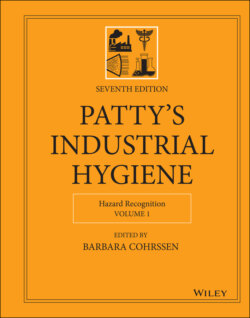Читать книгу Patty's Industrial Hygiene, Hazard Recognition - Группа авторов - Страница 74
1 INTRODUCTION
ОглавлениеOne of the most effective ways to reduce occupational risk is to avoid the introduction of hazards into the workplace. It is vitally important to manage workplace risks from the beginning stages of design throughout a system's life span to decommission and disposal. The process of anticipating, identifying, assessing, and controlling hazards and their risks during design and throughout the life cycle of a system is known as prevention through design (PtD). The primary purpose of the PtD process is to achieve and maintain an acceptable risk level by “designing‐in” safety measures and avoiding or reducing hazards. However, its practice remains one of the most under‐utilized aspects of occupational safety and health (OSH) risk management.
Borrowing from the phrase of the poet, Alexander Pope, “to err is human, to forgive is divine” (Alexander Pope: 1688–1744), the PtD version might read as “to err is human; to prevent by design is divine.” Fallibility is an inherent, ever‐present element of the human condition. The potential for human error and mistakes during interactions between system elements – humans, tools, machinery, software, materials, procedures, and the work environment – always exists. However, when overly complex or error‐prone elements exist in workplace systems, the likelihood of errors increase (1). In other words, poor or confusing designs lead to potential error‐traps, which in turn lead to incidents, injuries, and even fatalities. The practice of PtD must include designing for error‐free work using human factors engineering and ergonomics principles.
